The washing machine does not drain completely
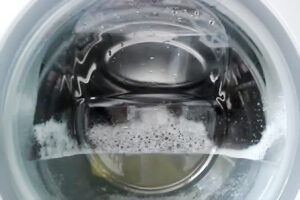 When the washing machine does not drain completely, the cycle may not complete properly. Things just rinse in soapy water. This malfunction occurs often and you can usually fix it yourself, without the help of specialists. Let's figure out why the machine may behave this way.
When the washing machine does not drain completely, the cycle may not complete properly. Things just rinse in soapy water. This malfunction occurs often and you can usually fix it yourself, without the help of specialists. Let's figure out why the machine may behave this way.
Why does some of the waste remain in the machine?
First of all, you need to understand why the water does not drain completely. Observe the work of a “home assistant”. It is possible that the pump is not activated, in which case the characteristic “buzzing” noise will not be heard. In general, the reasons may be different:
- drain filter clogged. All the rubbish that ends up in the tank accumulates in it. These include pieces of paper, candy wrappers, hairpins with keys, and coins. If you do not clean the element for a long time, it will become clogged to such an extent that it will no longer allow water to flow through. That is why experts advise washing the “trash bin” at least once every three months;
- clogged drain hose. During each cycle, tens of liters of waste water pass through the hose. Undissolved powder granules, lint and other debris settle on its inner walls. If the tank is not completely emptied, unhook and clean the corrugation;
- failure of the drain pump. An incorrectly functioning pump can result in water not leaving the tank in full. This automatic machine unit consists of an impeller, housing, motor and pipes. The reason that the pump does not work well may be hair and threads wrapped around the impeller or foreign objects stuck between its blades. In addition, failure of the engine itself is quite possible.In this case, the part will have to be changed completely;
- problems with the control module. Burnout of semiconductors on the electronic board or the slightest glitch in the firmware will lead to failure of the unit. So, the “brain” of the machine will not be able to command the pump to pump out water. In this case, diagnostics of the programmer is necessary;
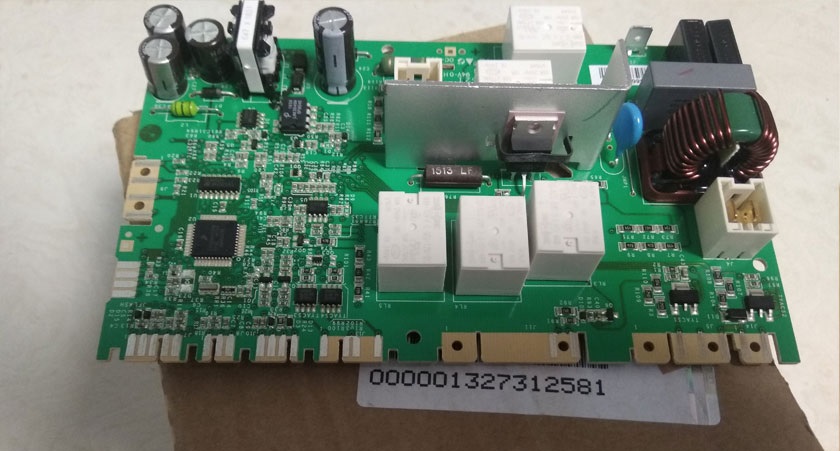
- Incorrect connection of the drain hose. So, after several years of using the washing machine, the operating power of the pump decreases and is no longer enough for normal pumping of water. This is especially true in cases where the corrugation is longer than the standard one and a half meters (this happens if the machine is placed far from communications);
- Damage to electrical wiring. The automatic machine vibrates during operation, especially during the spin phase. Because of this, wires in the system may break. The water pumping function will be disrupted. To correct the situation, you will need to inspect all contacts;
- blockage of a common house sewer pipe. In this case, it is necessary to clean the riser. For help, you need to contact a plumber servicing your home.
If the automatic machine has been in use for more than 6-8 years, and it makes a lot of noise when spinning, most likely, water remains in the tank due to a broken pump.
A self-diagnosis system will help you understand what exactly happened to the machine. All modern machines are equipped with it. If the washer displays a fault code, decipher the error - this will help determine the cause of the non-functioning drain. All information is in the instructions for the electrical appliance.
Options for removing residual water
To diagnose and repair the “home assistant”, it is necessary to remove any remaining water from the system. There are several ways to force a drain. Let's look at each of them.
Before draining the water from the tank yourself, be sure to turn off the power to the automatic washing machine.
It is important to follow safety regulations. If you forget to unplug the power cord and start draining the water, you risk getting an electric shock. Let's look at all the available ways to empty the tank of an automatic car.
A drain sleeve will come to the rescue. This is the fastest and easiest way. It is necessary to disconnect the corrugation from the connection point to the sewer pipe, lower the hose below the level of the bottom of the tank and direct its tip into the container. In this position, spontaneous outflow of liquid from the washer should begin.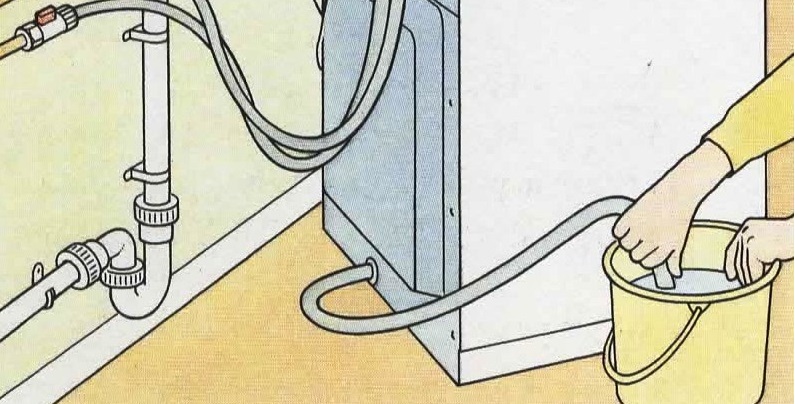
This option is the most effective; it makes it possible to completely “drain” the tank in just a couple of minutes. Unfortunately, this method is not applicable to all automatic machines. On Bosch and Siemens models, a loop is built into the drain hose, the purpose of which is to prevent self-draining. The protective device will not allow water to “escape” from the tank.
The second option is to empty the “centrifuge” using a garbage filter. The device is available on all automatic washing machines. Its main purpose is to prevent dirt and foreign objects from entering the pump. It traps paper, paper clips, hairballs and other debris.
What to do next? Firstly, be sure to prepare a large container where the water will collect, and several dry rags. The drain filter is located at the bottom of the SMA housing, directly under the tank. Depending on the model of the washing machine, the “trash bin” may be covered with a decorative false panel or a small service hatch. Once you have found a filter, follow these steps:
- cover the floor covering around the machine body with rags;
- tilt the washing machine back, place a basin under it, just in the area where the garbage filter is located;
- unscrew the “plug” half a turn, make sure that the water flows into the basin;
- Remove the element completely and collect any remaining liquid.

On modern automatic machines, there is an emergency drain hose near the garbage filter. And this is the third opportunity to urgently remove water from the system. It is enough to point its end into the basin and remove the plastic plug.
If none of the above methods are suitable, it is possible to remove water from the tank through the hatch. This option is the most labor-intensive of those listed. To complete the procedure, you must:
- see to what point the drum is filled. When there is too much water and it reaches the middle of the door, you will have to tilt the washer back. To free your hands, you need to somehow fix the device in this position;
- carefully open the hatch door;
- Using a mug or other container, scoop out the water from the tank.
This method is also not always applicable. Modern SMAs block the door if the tank is full, and you won’t be able to open the hatch just like that. The method is not very convenient; in addition to the fact that it takes a lot of time, not all the water is drained from the drum.
And finally, you can drain the drum of an automatic machine using the drain pipe. This option is used as a last resort. In this case, water will be forced out directly from the machine’s tank.
It is possible that when unscrewing the drain pipe, water will not flow. This will indicate that it is clogged. In such a situation, it will be possible not only to empty the tank, but also to identify the cause of the machine malfunction. To remove water from the drum through the drain pipe with your own hands, you must:
- make sure that the washing machine is de-energized;
- unhook the back wall of the washing machine body;
- find the drain pipe;
- put dry rags under the machine;
- place a low basin in the area where the pipe connects to the pump;
- loosen the clamp securing the tube to the pump;
- Remove the pipe and water will immediately flow out of it.
If, after disconnecting the drain pipe from the pump, water does not flow, it means that its cavity is clogged and you will have to remove the blockage.
When the water has been removed from the tank, you need to connect the pipe back to the drain pump. The element is securely fixed with clamps. It is important to ensure the tightness of the connection so that a leak does not open during the next wash.
Having emptied the machine, you can begin diagnostics. The test should start from simple to more complex. First, check the garbage filter and drain hose for blockages. Afterwards the pump is tested, the wiring and control module are inspected. Electronics repairs are best left to specialists.
Interesting:
Reader comments
- Share your opinion - leave a comment
Categories
Washing machine repair


For buyers

For users

Dishwasher

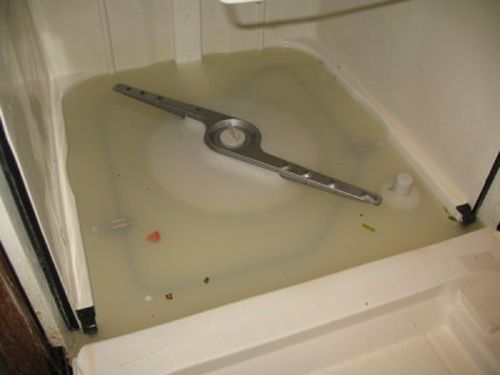


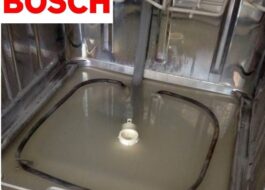

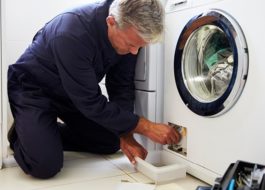










Add a comment